How To Dominate Your Guitar Playing With 3 Easy Fingerpicking Patterns And One Simple Chord Progression
While todays lesson will begin with me showing you some common fingerpicking patterns, and my instruction for you to get these into your fingers, it is not where the lesson will end.
Nor is it the focus of the lesson.
Not to diminish the importance of patterns and technique when it comes to fingerpicking your guitar, however without the ability to transform these into music through creative application, there really is no point in learning any patterns or technique in the first place.
It’s in your ability to creatively apply the fingerpicking patterns and technique you develop that will determine how great your fingerpicking guitar playing sounds.
The problem lies in only focusing on the picking hand. Yes of course this is important, however the role your fretting hand plays in fully realising your fingerpicking sound is also of upmost importance.
To highlight this point, we will only be applying our fingerpicking patterns to a single chord progression.
There is nothing special about this progression on its own. However once I show you a variety of ways to apply the fingerpicking patterns to it, you will start to get a glimpse of what is possible with just a few simple patterns for fingerpicking your guitar.
The following are 3 common approaches to fingerpicking guitar as far as patterns are concerned. As I have already said, on their own these patterns aren’t anything special, nor do they sound very musical.
That’s ok. We will be changing all that in just a short while. But first I need you to familiarise yourself with the following fingerpicking patterns.
This first pattern is a little more generic and doesn’t really have a specific name. Don’t be fooled though, when applied a certain way on your guitar it will sound anything but generic!
I call this the open string pattern because when applied, the open strings will feature heavily bringing a very unique sound to your fingerpicking solo lines.
Here is the pattern ascending:

And here it is descending:

Banjo roll patterns make for great fingerpicking opportunities on guitar. Here is a forward banjo roll to get you started:

Banjo rolls like the one above can be applied in all kinds of creative ways to your fingerpicking guitar playing. Bare with me and I’ll show you just what can be done very shortly.
The third pattern I am going to show you is perhaps the most common of all. It can be heard in literally thousands of songs and will become an extremely useful pattern for your own fingerpicking.
It can be called different names. I like to call it the clawhammer fingerpicking pattern. Even though it is not the clawhammer technique that is associated with the banjo, it helps distinguish this pattern from travis picking, which is another name some people like to call this pattern, though it is not travis picking strictly speaking.
Whatever you call it, it’s just a great pattern to get under your fingers because of its extensive use in the fingerpicking world.
The clawhammer pattern centres around your thumb plucking bass patterns on the lower three strings of your guitar, while your fingers pluck notes on the top 3 strings in various combinations.
The thumb is always playing notes on the beat. The notes you pluck with your fingers on the higher strings can be on and off the beat.
Here is a version of the clawhammer pattern to get you started:

Here is the chord progression we will be using to apply our fingerpicking patterns:
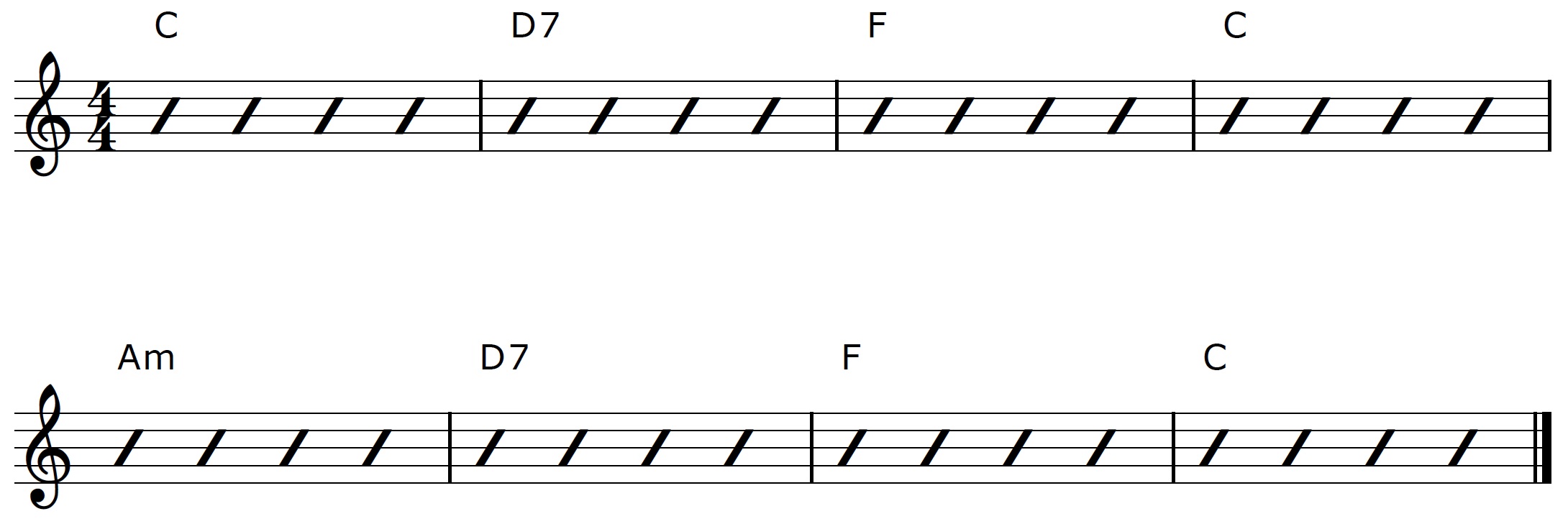
I am purposely using the one single chord progression to apply all 3 fingerpicking patterns. I like to do this to highlight just how cool these patterns can sound, and what each can bring to the same chord progression.
It takes the focus away from what you are applying your patterns to, and more on how you are applying them.
In this first example we are not going to be playing chords, but rather outlining the harmony of each chord in the progression above with a short fingerpicked solo line.
We will be using the open string pattern to do this:
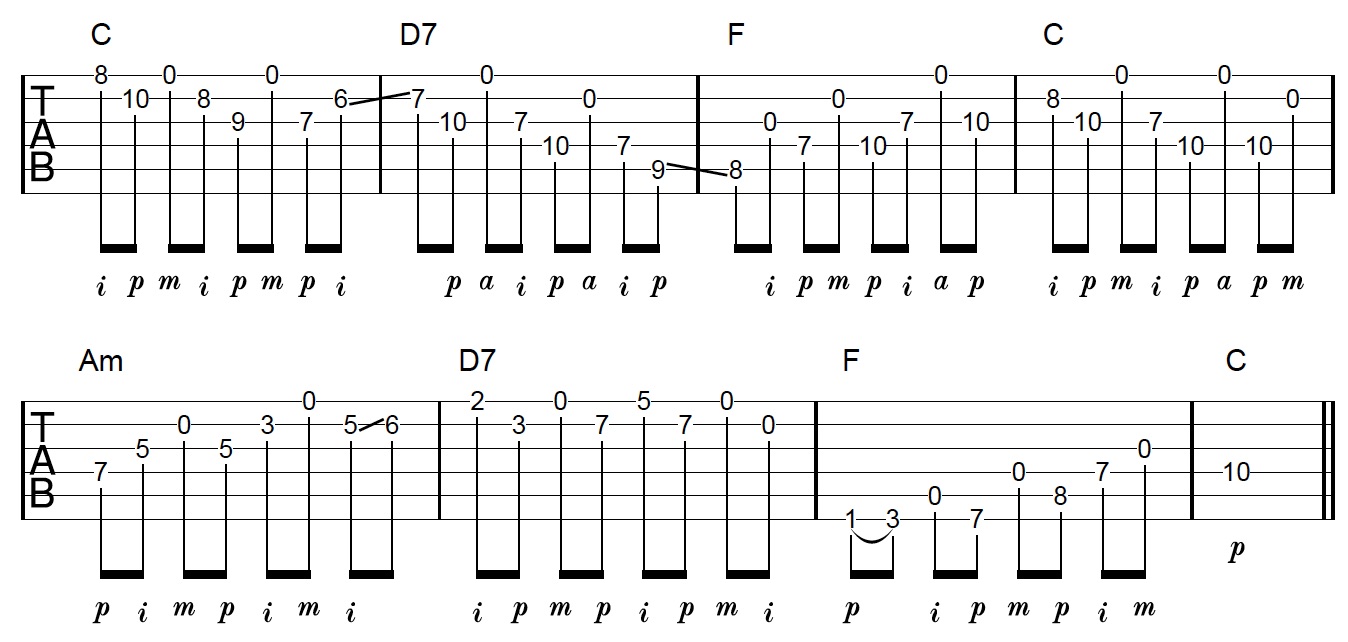
I think you will agree that the example above sounds really cool and quite unique!
This is largely due to the fact that we are playing open strings mixed with fretted notes outside of the open position on the guitar.
While I am not exclusively using the open string fingerpicking pattern I presented to you earlier, what I am doing is largely based off of this pattern.
Sometimes you will need to feature patterns more than strictly use them.
In addition to this I am outlining the harmony of the progression by targeting relevant chord tones. This is why you can hear the chords being implied throughout the example even though none are being played.
Let’s now move on to the banjo roll pattern.
Here is one way it could be applied to our progression:
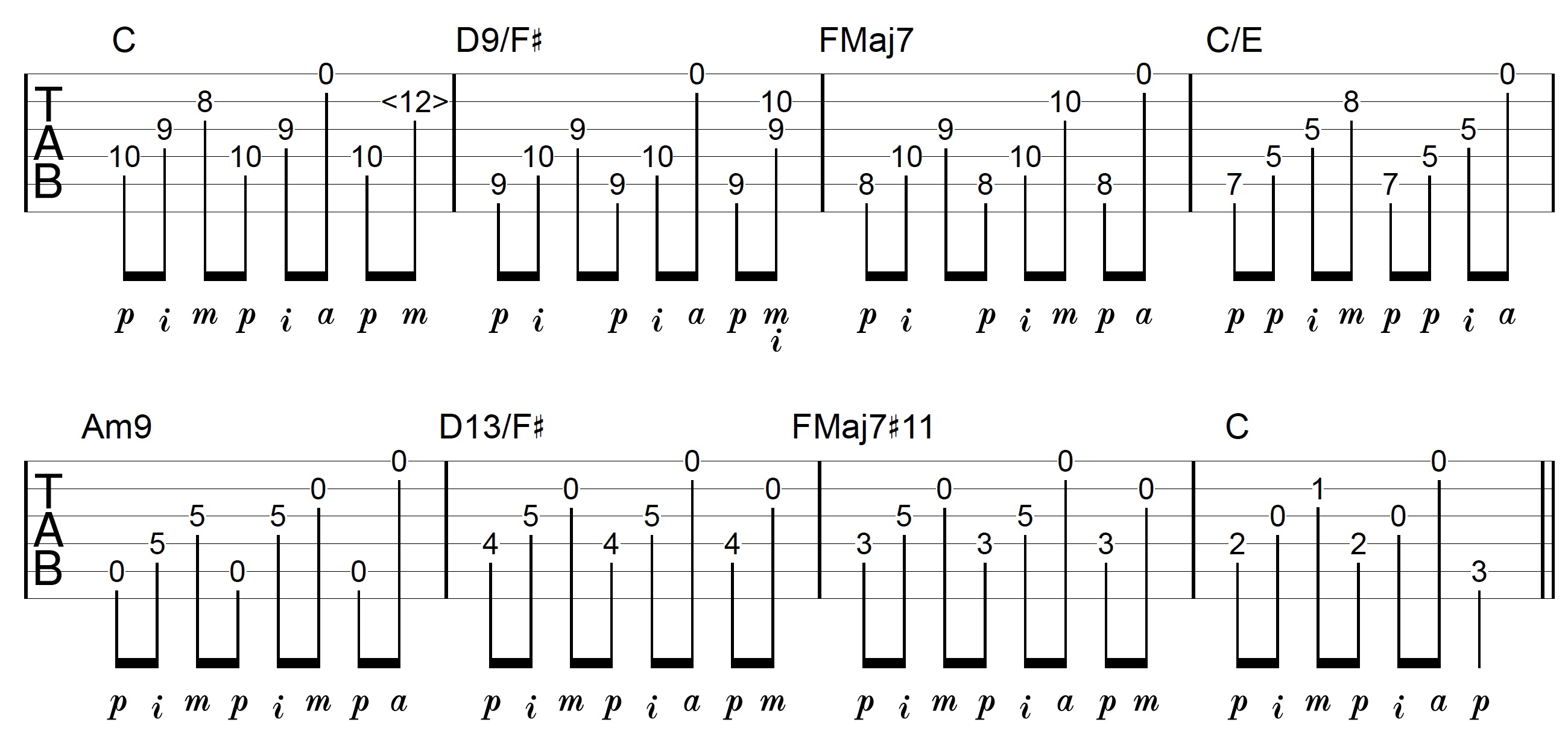
Aside from the pattern in the example above, you will also notice I am using different chords to play the progression than the standard open and bar chord shapes.
Remember when I said there is more at play than just fingerpicking patterns contributing to the sound of our progression.
Well, this is what I was meaning.
Your fretting hand has as much to do with how great your fingerpicking may or may not sound as your picking hand does.
Having a variety of ways to voice the chords out to a progression will allow you to showcase your fingerpicking skills on a much higher, more impressive level.
If all you know are open and bar chords, then you really don’t have much of a platform from which to apply your fingerpicking skills, such as the patterns we are looking at in this lesson.
Too many people focus on the picking hand only when working on fingerpicking. Don’t underestimate what your fretting hand can bring to the party.
Here is an example of our clawhammer fingerpicking pattern applied to our progression:
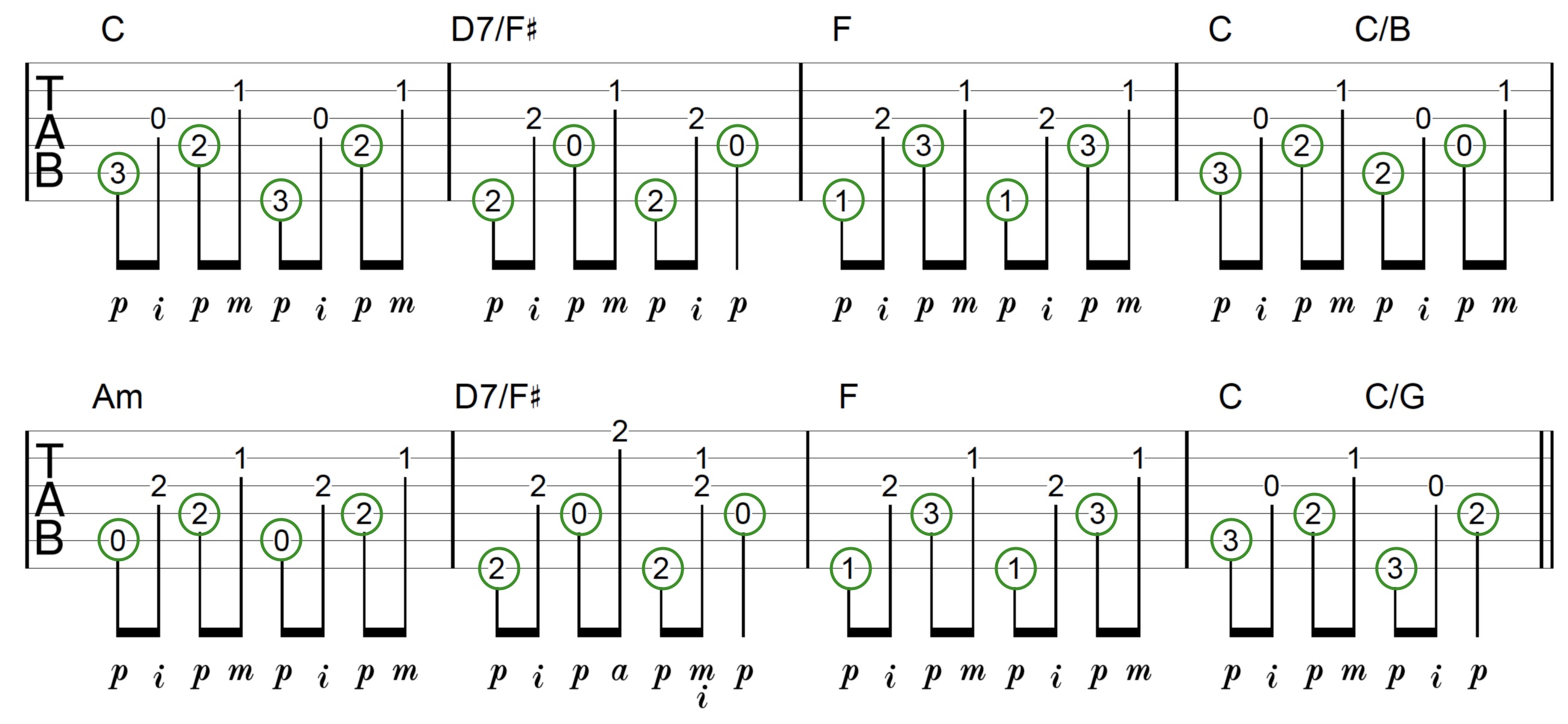
Notice how the bass notes plucked with your thumb always fall on the beat. This is crucial for this pattern to work. These bass notes create a reference point for what your fingers are doing on the higher 3 strings.
To help you see this I have highlighted each bass note in the example above.
There is a lot more that could be said about the clawhammer fingerpicking pattern here, however it is beyond the scope of this article to do so.
Learning the variation of the pattern I have provided you here and the application of that pattern is a great start though.
To showcase just how unique each fingerpicking approach we have applied to our chord progression sounds, I have combined them here back to back in an etude of sorts:
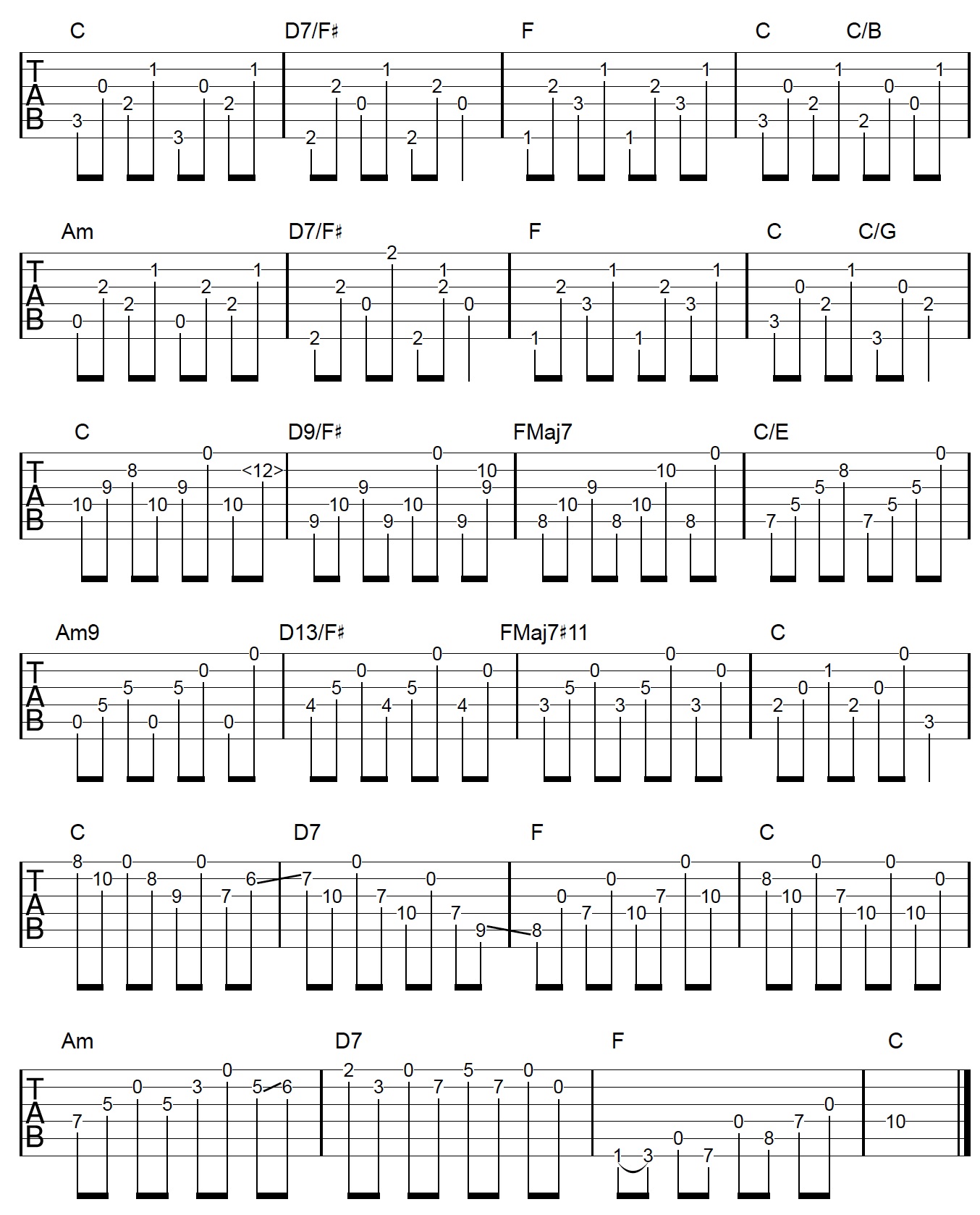
I’ve chosen to start with the clawhammer approach, then the banjo roll, followed by the open string solo lines. You could put these approaches in any order you like when creating an etude and they would still work.
Each approach above sounded great in isolation, but I think you’ll agree they sound even better when combined!
These are the kind of things that become possible when you not only learn fingerpicking patterns, but how to apply them too.
But there is applying, and there is creative application.
We aren’t simply wanting to dump a fingerpicking pattern onto a chord progression and be done with it. Rather we want a variety of ways we can approach applying our fingerpicking patterns. This is where your fretting hand comes into the equation.
Don’t ignore the fretting hand and what it can bring to the table regarding chords, harmony, melodies and riffs.
Learn exactly what needs to be done to fast track your fingerpicking skills so you can fingerpick your guitar like a pro!
Specializing in online acoustic guitar lessons, Simon Candy is based in Melbourne, Australia where he runs his own guitar school.